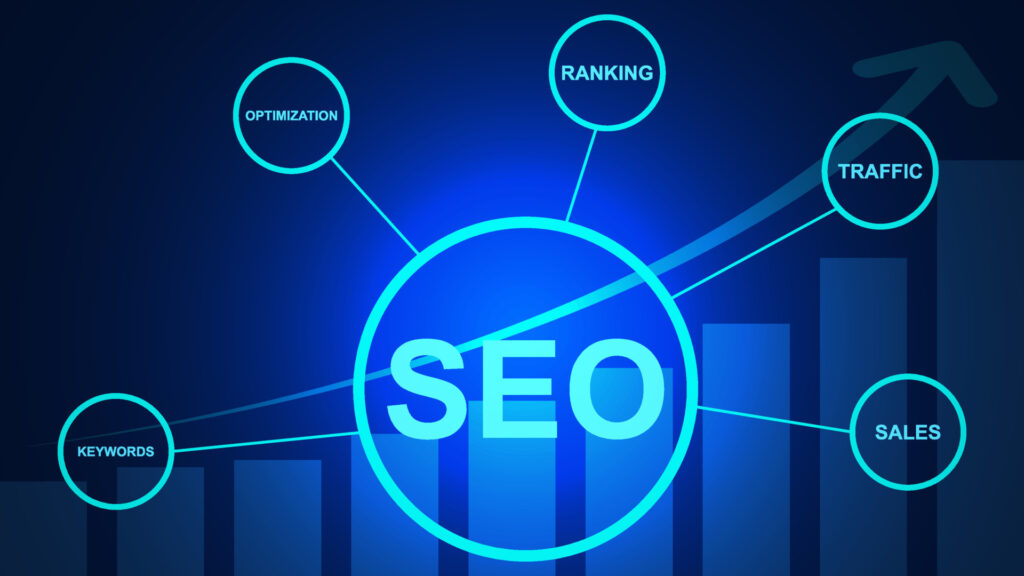
SEO Best Practices Every Marketer Should Follow in 2025
As search engines continue to evolve and user expectations shift, staying on top of the latest SEO best practices is critical for marketers in 2025. With more businesses embracing digital platforms, the competition to rank higher in search results has never been fiercer. To ensure that your website is visible, user-friendly, and authoritative, you must optimize your digital presence using proven strategies that align with current SEO trends.
This article will guide you through the SEO best practices that every marketer should follow in 2025, including on-page and off-page optimization techniques, content optimization, backlink building, improving user experience (UX), and ensuring your site is mobile-friendly. We’ll also explore EEAT (Experience, Expertise, Authoritativeness, and Trustworthiness), an essential factor in SEO today. And to help you avoid costly mistakes, we’ll discuss outdated SEO techniques that no longer deliver results.
Why SEO Remains Essential in 2025
SEO is a long-term investment that provides tangible results by driving organic traffic to your website. As we move into 2025, search engines like Google are becoming more sophisticated, using artificial intelligence and machine learning to understand user intent better and provide higher-quality search results. Effective SEO practices ensure that your website is ranked favorably, driving not only more traffic but also better-qualified leads.
Marketers need to understand that SEO isn’t just about rankings anymore. It’s about providing a seamless user experience, delivering valuable content, and building a trustworthy digital presence.
1. Content Optimization: The Foundation of SEO Success
Content is still king in SEO, and optimizing it correctly is a vital aspect of any successful SEO strategy in 2025. The most effective content meets the user’s needs, solves their problems, and is crafted with both search engines and humans in mind.
1.1 Focus on User Intent
Search engines prioritize content that answers the user’s search query effectively. In 2025, understanding and catering to user intent is more critical than ever. There are three types of user intent:
- Informational: The user seeks knowledge or answers to questions.
- Navigational: The user is looking for a specific website or page.
- Transactional: The user intends to make a purchase or perform an action.
Understanding which intent your audience has and tailoring your content to fulfill that need will significantly improve your rankings and user engagement.
1.2 Use Keywords Strategically
While keyword research is still important in 2025, the approach has evolved. Avoid overstuffing your content with keywords. Instead, focus on:
- Long-Tail Keywords: These are highly specific phrases that capture user intent more accurately and are often less competitive.
- Semantic Search: Google uses natural language processing (NLP) to understand the context behind a search query. Create content that answers a wide range of related questions.
Incorporating keywords naturally into your content, titles, meta descriptions, headers, and image alt text is essential for both SEO and user readability.
1.3 Create High-Quality, Engaging Content
The depth and quality of your content matter. Google rewards content that is comprehensive, original, and provides real value to users. Use facts, data, and high-quality sources to back up your content and offer real insights.
2. Backlink Building: A Cornerstone of Off-Page SEO
Backlinks remain one of the most influential ranking factors in SEO. However, it’s not about the quantity of backlinks anymore—it’s about the quality.
2.1 Focus on Authority and Relevance
Building backlinks from high-authority websites within your industry or niche will improve your rankings. In 2025, Google is more likely to reward backlinks from trusted sources. Avoid low-quality link-building strategies like purchasing links or participating in link farms, as these can result in penalties.
2.2 Leverage Guest Posting and Influencer Outreach
Guest posting on reputable blogs, partnering with influencers, and collaborating with industry experts can generate high-quality backlinks that enhance your SEO efforts. It also helps increase your site’s visibility among new audiences.
2.3 Focus on Natural Link Building
Earn backlinks by creating share-worthy content, such as insightful articles, research reports, infographics, and case studies that people want to link to. Organic link-building methods like these are more sustainable and effective in the long run.
3. User Experience (UX): The Key to Engagement
Google’s algorithms now consider user experience (UX) as a ranking factor. A positive UX leads to longer site visits, lower bounce rates, and higher engagement—all of which contribute to higher rankings.
3.1 Ensure Fast Load Times
Site speed has always been important, but it’s even more crucial in 2025. A slow-loading website can frustrate users, leading to higher bounce rates. Optimize your images, use content delivery networks (CDNs), and minimize JavaScript to improve your page load times.
3.2 Mobile-First Design
Google now uses mobile-first indexing, meaning it prioritizes mobile-friendly websites. Ensure your site is responsive, meaning it adjusts to different screen sizes and devices without losing functionality or user-friendliness.
3.3 Intuitive Navigation
Make it easy for users to navigate your site. Clear, well-structured menus and logical content organization improve the overall UX and help search engines better understand your website’s layout.

4. Mobile-First Indexing: A Must for 2025 SEO
With the rise of mobile users, mobile-first indexing is now the default for search engines. Marketers must ensure their websites are optimized for mobile devices.
- Responsive Design: Use responsive design techniques to ensure that your website adapts to different screen sizes, providing an optimal experience for both mobile and desktop users.
- Mobile Speed Optimization: Since mobile users are often on the go, make sure your website loads quickly on mobile devices to reduce bounce rates and improve engagement.
5. EEAT: Experience, Expertise, Authoritativeness, and Trustworthiness
EEAT is a concept that Google has increasingly prioritized in recent years, especially for websites that deal with sensitive topics, such as health or finance.
5.1 Showcase Your Expertise
Demonstrate your expertise by producing high-quality, authoritative content that’s backed by research and experience. Google rewards websites that can demonstrate subject-matter expertise.
5.2 Build Trust and Authority
Link to reputable sources, showcase reviews and testimonials, and keep your website secure with HTTPS. Trust signals are crucial for improving both rankings and user confidence.
5.3 Transparency
Be transparent about your website’s purpose, ownership, and content creation process. Users are more likely to trust websites that openly provide information about their authors and sources.
Outdated SEO Techniques to Avoid in 2025
SEO is constantly evolving, and some techniques that worked in the past are no longer effective. Here are a few outdated strategies to avoid in 2025:
- Keyword Stuffing: Overusing keywords in an unnatural way harms your content’s readability and SEO performance.
- Low-Quality Backlinks: Focus on high-quality backlinks from relevant, authoritative sources instead of engaging in link farms or paying for links.
- Duplicate Content: Google now penalizes websites for having duplicate or thin content. Always aim for original, value-driven content.
- Over-Optimized Meta Tags: Meta tags are important, but excessive use of meta keywords no longer has a significant impact on SEO.
Summary and Actionable Checklist
To stay ahead in SEO in 2025, you need to focus on quality content, a positive user experience, and building authoritative backlinks. Here’s a quick actionable checklist to follow:
- Conduct thorough keyword research with a focus on user intent and long-tail keywords.
- Optimize your content by providing valuable, high-quality, and engaging information.
- Build authoritative backlinks from trusted, relevant sources within your industry.
- Improve UX by ensuring fast load times, mobile-friendliness, and easy navigation.
- Follow EEAT guidelines to enhance your site’s authority and trustworthiness.
- Avoid outdated techniques like keyword stuffing, low-quality backlinks, and duplicate content.
By implementing these SEO best practices, marketers can ensure that their digital presence is competitive, user-friendly, and aligned with the latest search engine requirements in 2025.
Meta Description (150-160 words):
Discover the top SEO best practices for 2025 that every marketer should follow to boost rankings and drive organic traffic. Learn strategies for content optimization, backlink building, user experience (UX), mobile-first indexing, and EEAT (Experience, Expertise, Authoritativeness, Trustworthiness). Avoid outdated SEO techniques and implement effective, up-to-date methods that will keep your website competitive and user-focused. Follow this actionable checklist for success in 2025.
releated:Local SEO Dominance: Strategies for Internet Marketing Success



